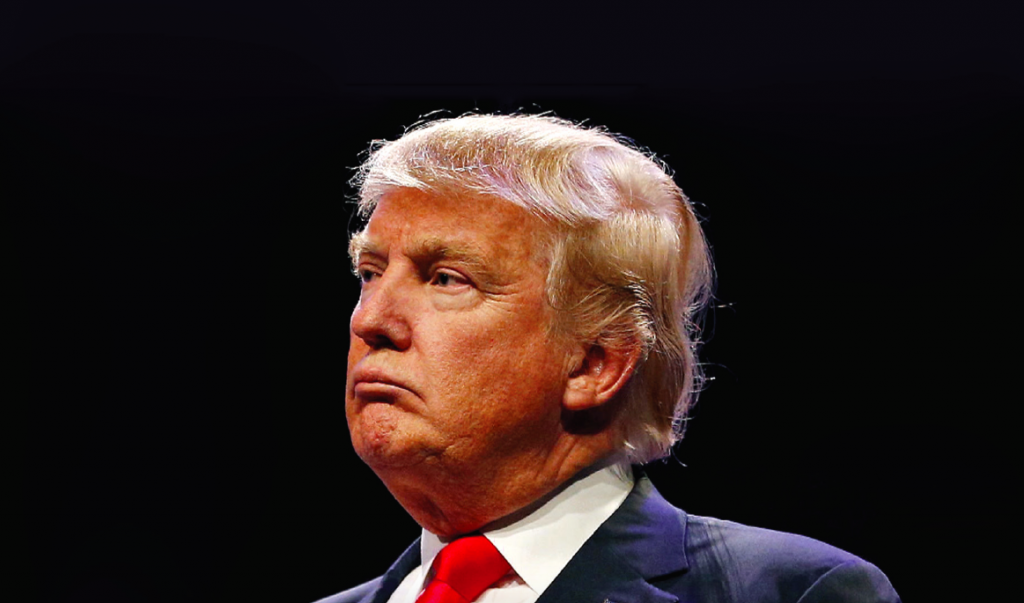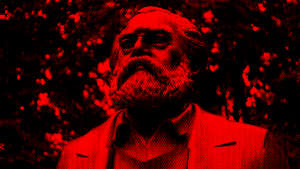Left Voice’s second issue, “Women on the Front Lines”, is now available for purchase. For every magazine sold, we are donating $1 to a worker controlled factory in Argentina.
From neoliberalism to a new nationalist era
For the past three decades, free trade was the order of the day. From the E.U. to NAFTA to numerous bilateral agreements with China, neoliberalism spanned the globe. Republicans and Democrats, European social democrats, conservatives and Communist parties all wholeheartedly embraced this ideology. Yet, in just the past year, we saw two major events that shook the foundations of the neoliberal order: Brexit and the election of Trump. In the face of a protracted world economic crisis and a lack of a true left alternative, economic nationalists have gained strength by threatening to withdraw from (or renegotiate on more favorable terms) the major trade pacts of the neoliberal era. The far right has earned its greatest victories with Trump’s election and the rise of UKIP, but nationalists also have nearly won elections in Austria and the Netherlands, and they now threaten to do so in France. The common threads across all these phenomena have been escalated attacks on immigrants and refugees and a refutation of neoliberal trade policies.
This dramatic political shift directly results from the failure of neoliberalism, the dominant economic policy since the Reagan era, to continue delivering the profit rates it once had. With all the talk of record highs in the stock market, it is easy to forget that since the end of the recession in 2009, average growth in the U.S. has been only 2.1 percent, the lowest of any post-recession period since WWII. Productivity has also failed to return to pre-recession levels. In 2016, Federal Reserve chairwoman Janet Yellen noted that average productivity for the past five years was at a “miserable pace,” at just 0.5 percent annually. Investment has fallen off significantly, as investors are weary of persistent low interest rates, high risk, and sluggish growth.
Similar trends are affecting Europe, South America, and other places. It was in this context of world capitalist crisis and an as yet unorganized working class, that Trump was elected in the U.S. and Britons voted to withdraw from the E.U. amid campaigns of immigrant hatred and Islamophobia.
A shaky start for Trump
With Trump’s election, Republicans now control the White House, both houses of Congress, a majority of governorships, and likely soon, the Supreme Court. Yet the widespread rejection of Trump and growing polarization in the country, deep divisions within the ruling class itself, and Trump’s inability to form stable blocs even within his own party have prevented the Right from establishing hegemony.
Trump’s current approval ratings are, historically speaking, abysmal. A recent poll put his approval at just 37 percent, a record low for a president in just his third month in office. And it is not just Trump the figure but his policies too that are widely rejected. Polls gathered by the Washington Post show that between 51 and 55 percent of Americans oppose the Muslim ban. According to Gallup, 66 percent of Americans oppose deporting all undocumented immigrants and 84 percent support a citizenship path. Further, according to a Quinnipiac Poll, a majority of Americans (61 percent) oppose “reducing regulations intended to combat climate change,” and a plurality (50 percent) oppose restarting the Keystone XL and Dakota Access Pipelines.
That Trump faces widespread opposition should come as no surprise. It is well known that Trump lost the popular vote by 3 million votes. Somewhat less known is that only 26 percent of all eligible voters cast their votes for the arch-reactionary GOP candidate. In fact, when voters who chose third-party candidates or those who stayed away from the polls are considered, close to one-half of all eligible voters rejected both Clinton and Trump.
Resistance to Trump has been felt in the streets and the workplaces too. Since the first day of his presidency, a wave of mobilizations has occurred across the country, including one of the largest U.S. days of protest ever, the Women’s March on Washington. Over a dozen cities saw protests at airports following the detentions of residents from seven majority-Muslim countries. At the University of Berkeley, students and youth rioted in response to the university’s decision to invite Trump surrogate Milo Yiannopoulos to speak. The university was forced to rescind its invitation. Most recently, the Women’s Strike on March 8 forced several school districts across the country to close.
Attempts to consolidate power
Since taking office, Trump has mostly put aside his rhetoric of “draining the swamp” in Washington and sought to build consensus with both the Tea Party’s representatives and establishment Republicans in Congress through corporate tax cuts, environmental de-regulation, attacks on abortion rights, increased military spending, and other traditional issues of the Right. He has even attempted to mend fences with former foes like Paul Ryan, whom he once publicly chastised for “disloyalty,” in his campaign to “repeal and replace” Obamacare.
Whereas Hillary Clinton was supported by the great majority of the big bourgeoisie, Trump attempts to represent the small to mid-sized corporations who have not seen the same windfalls in the neoliberal era, as well as a significant number of major, primarily exporting corporations. These include Boeing, G.E., Pfizer, Oracle and others who make up the American Made Coalition, a newly-formed group of businesses that have declared their support for a dramatically increased border adjustment tax. These contrast to the exponentially larger numbers of import-based corporations, particularly retailers like Walmart, Best Buy, Target, Costco and others, who fiercely oppose such taxes.
At the same time, Trump seeks to maintain his foothold with middle-class and, to a lesser extent, working-class whites through the cancellation of the TPP, talk of expanded infrastructure projects, and measures aimed at pressuring employers to keep jobs in the U.S. In these aspects, he represents a new phenomenon within the Republican party that attempts to create a social base from the growing number of middle class sectors and white “rust belt” workers who have turned against the free trade model.
Contradictions in the Trump presidency
However, in just his first three months, Trump has already faced major contradictions. Clashes between the Trump administration and the courts, the mainstream media (outside of Fox), the intelligence agencies, and many within the Republican party, reveal deep divisions among the American bourgeoisie.
Within the same week, FBI Director James Comey twice publicly undermined the president — a virtually unheard-of occurrence — first confirming that there is an active bureau investigation into collusion between Trump’s campaign staff and the Russian government, and then contradicting the president’s claims that he’d been wiretapped by the Obama Administration during the presidential campaign, stating that he had “no information” to support the allegations. We cannot say whether the Russian cooperation allegations have any merit, but Comey’s public challenge to the president points to a rejection of the Trump agenda within the highest levels of the intelligence apparatus.
After the failure of Trump’s attempt to repeal Obamacare, there is talk of a “civil war” among Republicans — a hyperbole no doubt, but the metaphor speaks to the level of animosity between the many factions within the GOP. Despite being a Republican project for seven years, Repeal and Replace collapsed as the right wing of the party sought even fewer restrictions on the insurance companies, such as the requirement to cover maternity services, while the more moderate wing feared that further cuts to Medicaid and the elimination of all subsidies would mean that even higher healthcare premiums would permanently drive away working class and poor white voters from Republicans.
The TPP was dead on arrival when Trump took office, so a showdown over the agreement was avoided. However, further anti-free trade measures may well set off a true rebellion among establishment Republicans and the corporate elite. The Koch brothers have been famously anti-Trump throughout the election and frictions have continued after Trump has taken office. There is also a large pro-free trade bloc of Republicans within Congress. Only a year ago, Republican representatives in the House voted 190-50 in favor of allowing Obama to “fast track” the TPP agreement.
Concessions meant to shore up working class support, like Ivanka Trump’s paid childcare proposal, are sure to meet universal opposition from establishment and Tea Party Republicans alike as a new “entitlement program.” His plan to spend an additional $1 trillion — an insufficient sum, no doubt — to rebuild roads, bridges, hospitals, and airports, will find relatively few supporters among the GOP and, furthermore, runs contrary to his proposal to slash taxes for corporations and the ultra-rich.
Trump’s cozying up to the Washington establishment and his creation of a billionaire cabinet, is not likely to sit well either with those who propelled him into office. Finally, his proposal to make state Right-to-Work laws into federal statutes, is certain to erase his support among unionized white workers. We can look to the rebellion of union workers in Wisconsin, a state Trump won, as an example of what could happen should Trump attempt to implement a similar measure.
Weak Bonapartism
In this context, Trump’s administration can be characterized as a weak form of Bonapartism, although still within the framework of a bourgeois democratic regime. Like all Bonapartist phenomena, Trump arose during a period of increasing polarization and expresses an attempt to resolve, through repressive measures, the social contradictions that have been steadily growing.
Since the recession of 2008, this polarization was felt, on the left, with the surprising success of Bernie Sanders and new progressive movements, such as Occupy Wall Street, Black Lives Matter, the Standing Rock resistance, the Fight for $15, and the recent mobilizations of women against Trump. On the right, the GOP establishment has been increasingly displaced, first by the growth of the Tea Party in 2009, then by the Alt Right.
Trump’s repressive response has included the Muslim and refugee ban, and stepped-up ICE raids and deportations of undocumented workers, each instituted just a few weeks after taking office. Bonapartist regimes are characterized by an increased concentration of power in a charismatic leader, who pretends to rise above class conflict, although still advancing the interests of capital. Trump’s attempts to find a base of support in the military is also a typical feature of Bonapartist regimes. Trump’s proposed budget to Congress included a $54 billion dollar funding increase for the world’s largest military, including a portion to further militarize the border. To accomplish this, he proposes the complete elimination of 19 federal agencies and deep cuts to the EPA, and the departments of State, Agriculture, Labor and Health and Human Services among others.
Bonapartism, however, differs from fascism in that it does not aim to liquidate workers’ organizations and all democratic institutions. Although many individual fascists have been attracted to Trump, including the so-called Alt Right and white supremacists like Richard Spencer, the Trump administration, so far, cannot be characterized as a fascist government since he has made no attempt to dissolve the unions or suppress the institutions of American bourgeois democracy, like Congress, the media, the courts, etc. Symbolic measures, like preventing the New York Times and Washington Post from attending a press gaggle, are still far from fascist-style suppression. While a national Right-to-Work law would certainly weaken the unions, it would not outlaw them. In fact, Trump has tried to remain on good terms with many of the most conservative top union bureaucrats, even inviting them to the White House in his first days in office. And he has sought to find common ground around the relaunch of pipeline construction, new infrastructure projects, and formal cancellation of negotiations around the TPP.
This does not mean we should underestimate the danger Trump poses for workers and oppressed people. Indeed, fascism is not a prerequisite for the deepening of war, oppression and misery. Neither does it mean that a fascist turn is out of the question, if the current Bonapartist strategy fails to achieve its aims and if there is an upsurge in workers’ struggles.
America First
Trump also represents a reaction by the Right to what it sees as the diminished standing of the U.S. across the world. With “America First” as its slogan, the reactionaries behind Trump seek to correct the course undertaken by Obama such as the nuclear deal with Iran, the opening of relations with Cuba, and increased cooperation with the Chinese regime. Although no world power has yet been able to step into the place of the U.S. as a leading hegemon, it is indisputable that the U.S. has not been able to impose its will across the world as it did in decades past. The current balance of forces prevents Trump from launching a new military invasion in the Middle East, or elsewhere, but the possibility should not be ruled out given his expansion of the military and his recent deployment of Marines to Syria in the campaign against ISIS. Indeed, the characterization of Trump as an “isolationist” by the liberal mainstream media could not be further from the truth. Rather, he seeks a new unilateral defense of American interests, showing little regard for multilateral imperialist coalitions like NATO, which will intervene to protect those interests when necessary.
A new rapprochement with Russia
In this scenario, Trump’s attempts at a rapprochement with Russia begin to make more sense. Decades of isolating Russia together with NATO partners have not only failed to consolidate US hegemony but have failed even to contain Russian influence in the Middle East, the Baltic states, and elsewhere. Evidence of this is Russia’s preservation of the Assad regime in Syria, effective suppression of the pro-Western movement in Ukraine, and its incursions into Crimea. In the wake of a failed strategy toward Russia, Trump has instead attempted to undertake a realignment, seeking improved relations with Russia, to the chagrin of both Republicans and Democrats, and focused his efforts at undermining China, and even traditional allies like Germany. Trump has suggested that Germany is benefiting from currency manipulation through a “a grossly undervalued” Euro and that the country owes the U.S. “vast sums of money” for its defense.
It is too early to say how closely the Trump administration will collaborate with the Kremlin, but we can safely say that Russian interventions in U.S. politics have been greatly exaggerated by the Democrats, who want to return to a more hawkish position on Russia. At worst, Russia’s supposed hacking of the DNC only led to the release of factual information that could have been surmised anyway, that the party’s apparatchiks favored the candidacy of Hillary Clinton over Bernie Sanders, and was actively seeking out ways to ensure her victory. However, the intelligence agencies have so far failed to prove even this link and Wikileaks, which distributed the hacked emails, has denied that the source was the Russian government.
What is to come?
Throughout the world, capital is increasingly unable to overcome its contradictions. In the imperialist countries, and especially the U.S., this is expressed by immense pressure of capital to produce globally, use foreign labor, open borders for capital and finance, and on the other hand, protect national industry. Highlighting these contradictions is the prolonged world economic crisis that has dragged on since 2008. The inability to resolve these contradictions through normal means, leads to what Gramsci called “organic crisis,” as opposed to “conjunctural crisis.” Organic crisis is not limited to political, social, or economic crisis — it encompasses all of them. We are already seeing elements of “organic crises” in the central countries (the U.S., Britain, France, etc) and full-scale organic crises in the peripheral countries, like Brazil or South Korea.
Around the world, the traditional parties and figures are in decline (social democratic and conservatives in Europe, establishment Democrats and Republicans in the U.S.). Politicians in the political center, like Obama, have proven completely incapable of providing solutions to the needs of working class and poor people. This has given rise to new populist phenomena, not only on the right and but on the center-left as well (for example, Sanders, Corbyn). Meanwhile there is an increasingly convulsive international situation in which tensions between the imperialist powers (for example, the U.S. and Germany) are growing.
These factors can potentially offer openings for an upsurge in the class struggle, including the radicalization of workers and youth and the development of new and dynamic revolutionary organizations. The enormous protests following Trump’s election and rapid growth of parties to the left of the Democrats like the DSA, while still showing major limitations, give us hope for the development of new progressive phenomena not seen since the Vietnam War. Let’s get started building the resistance.











